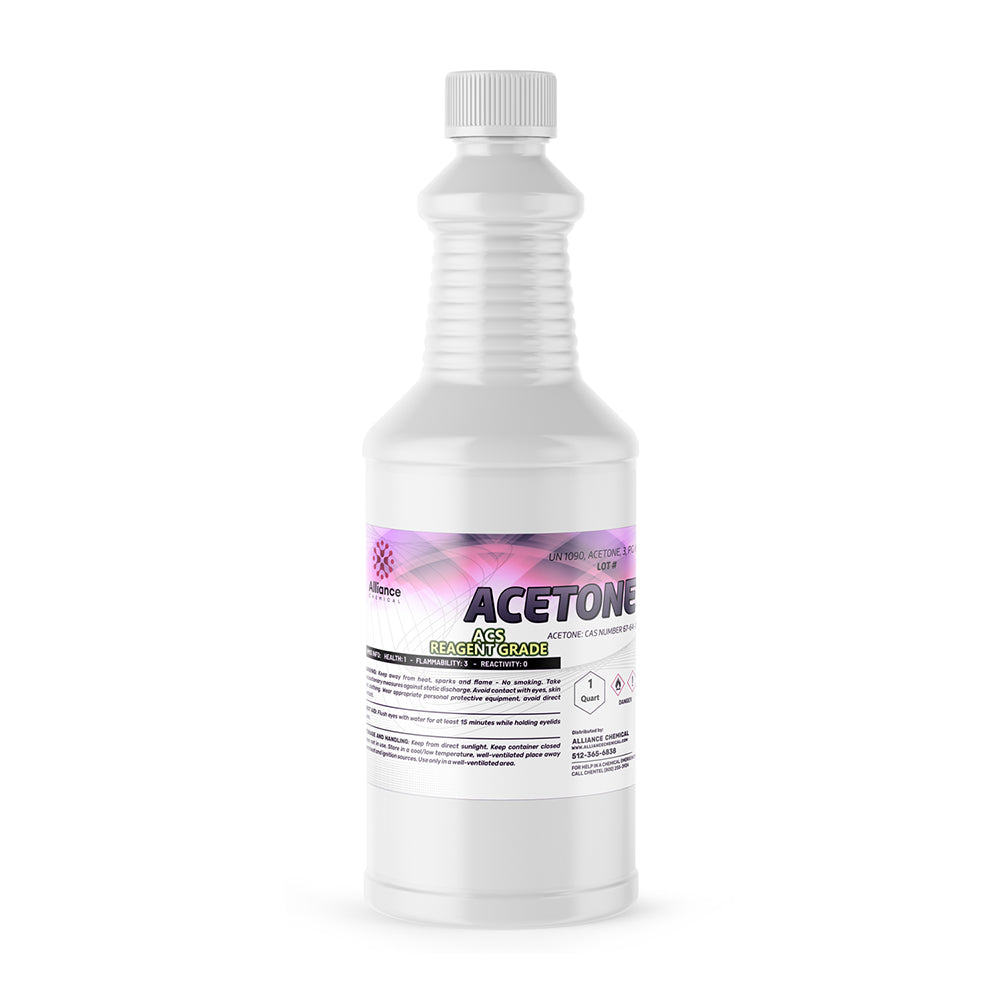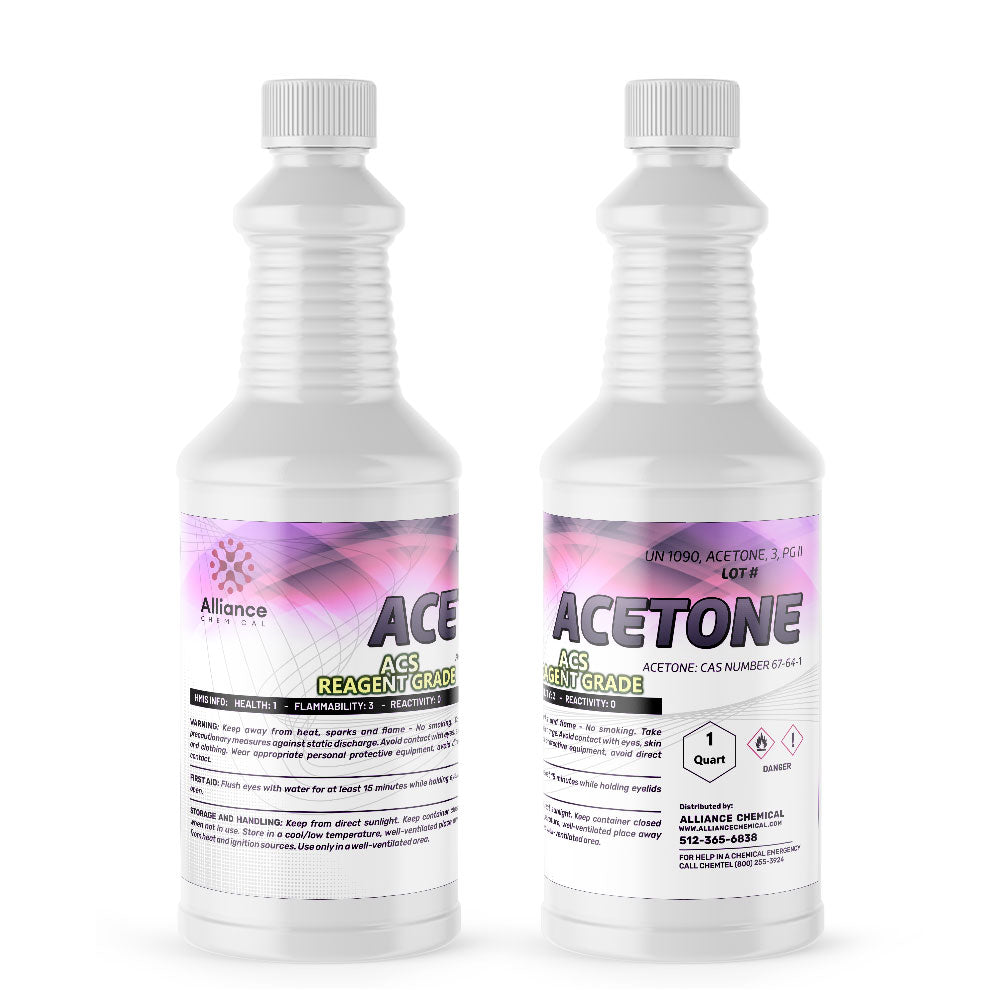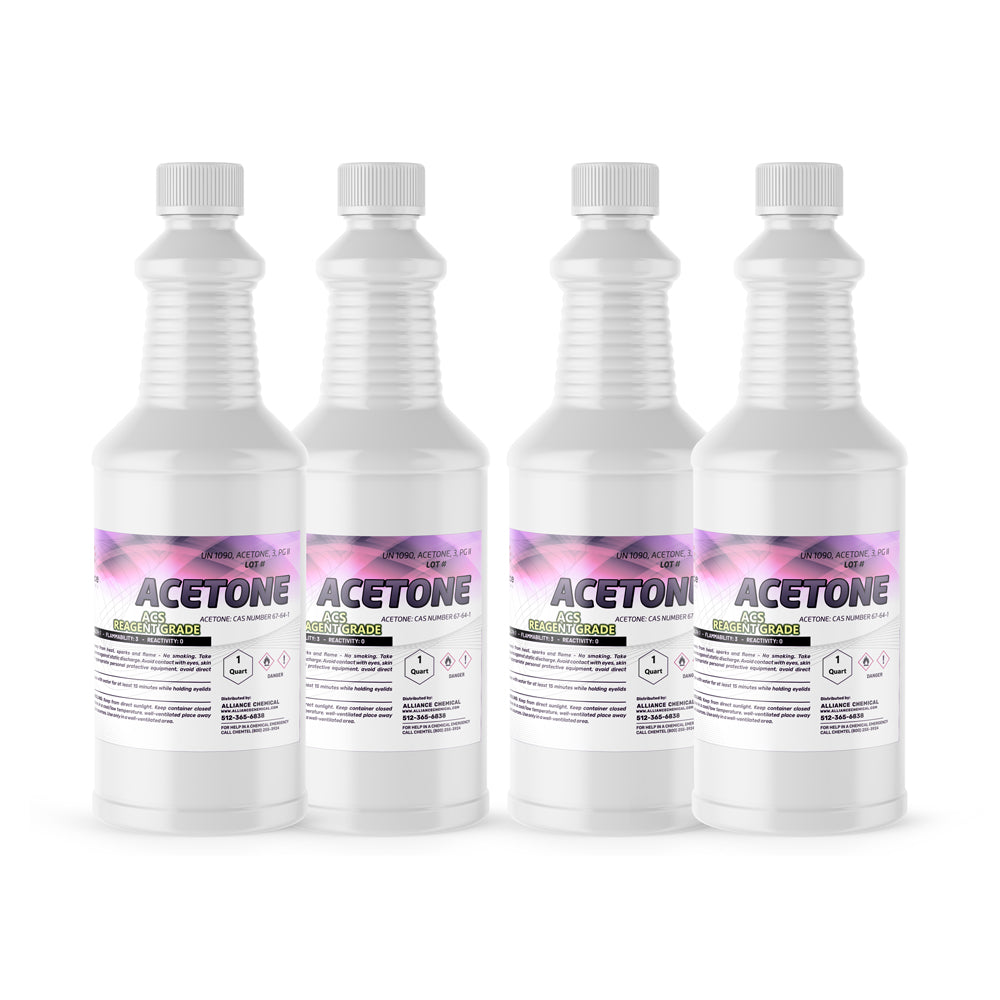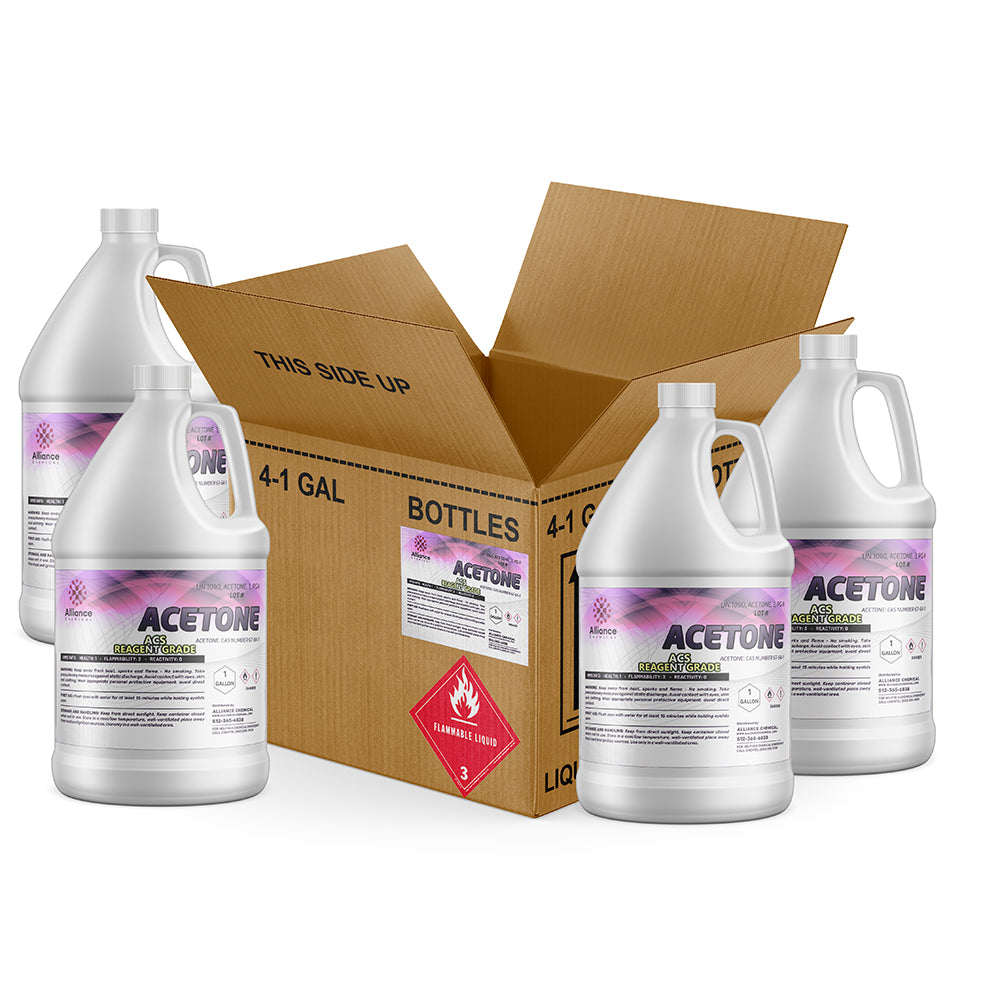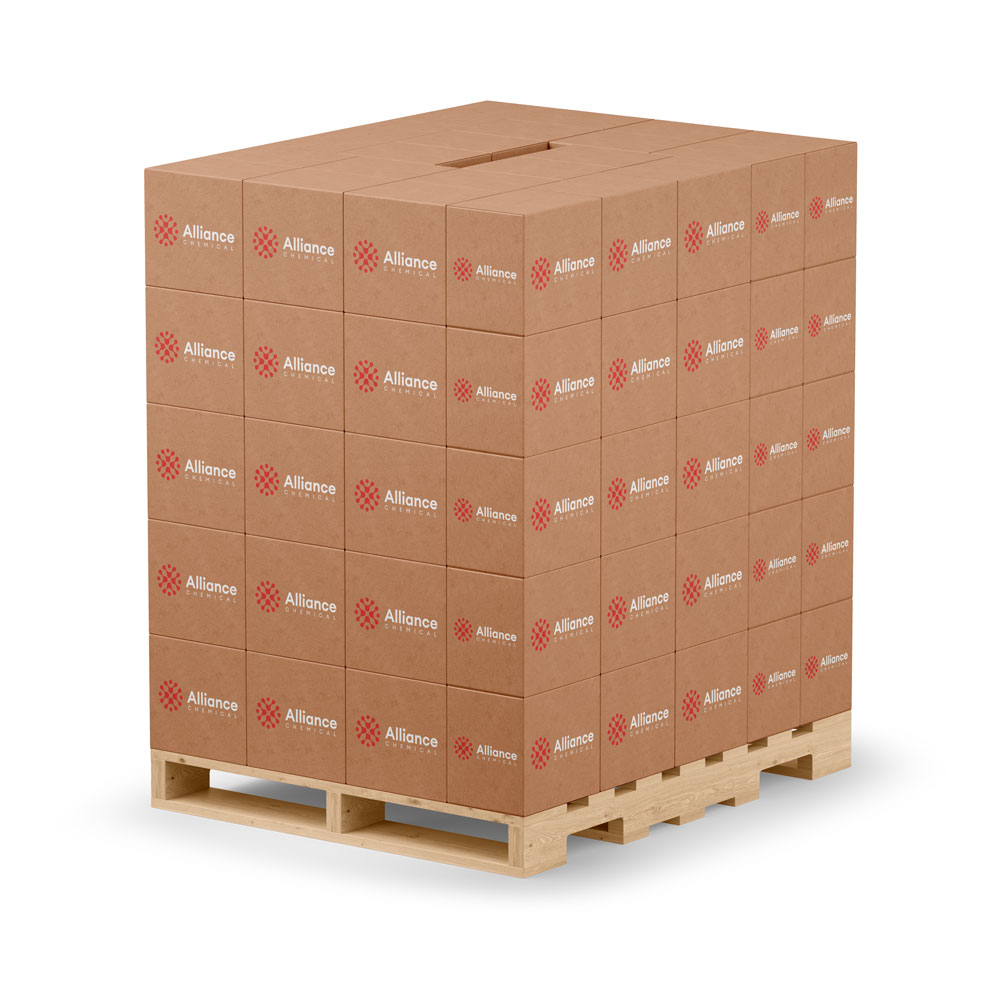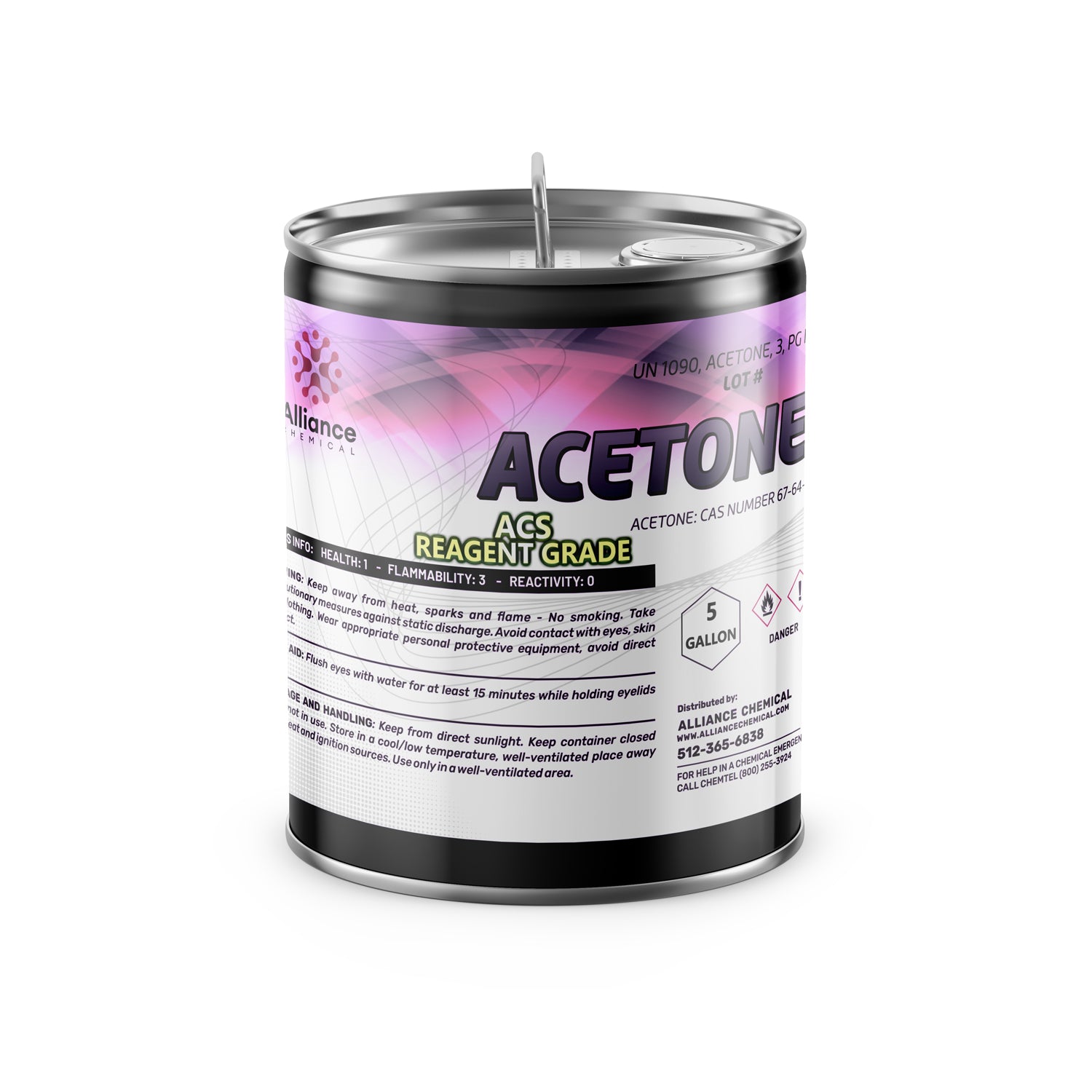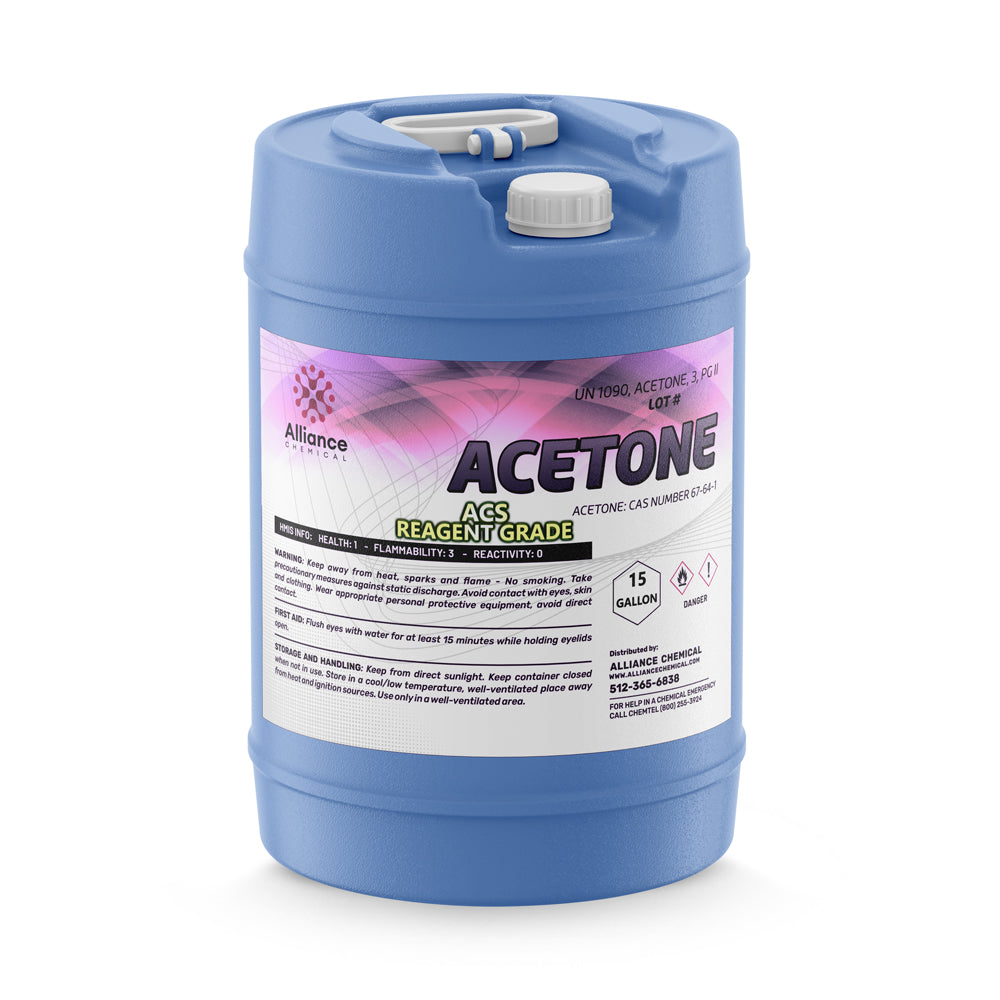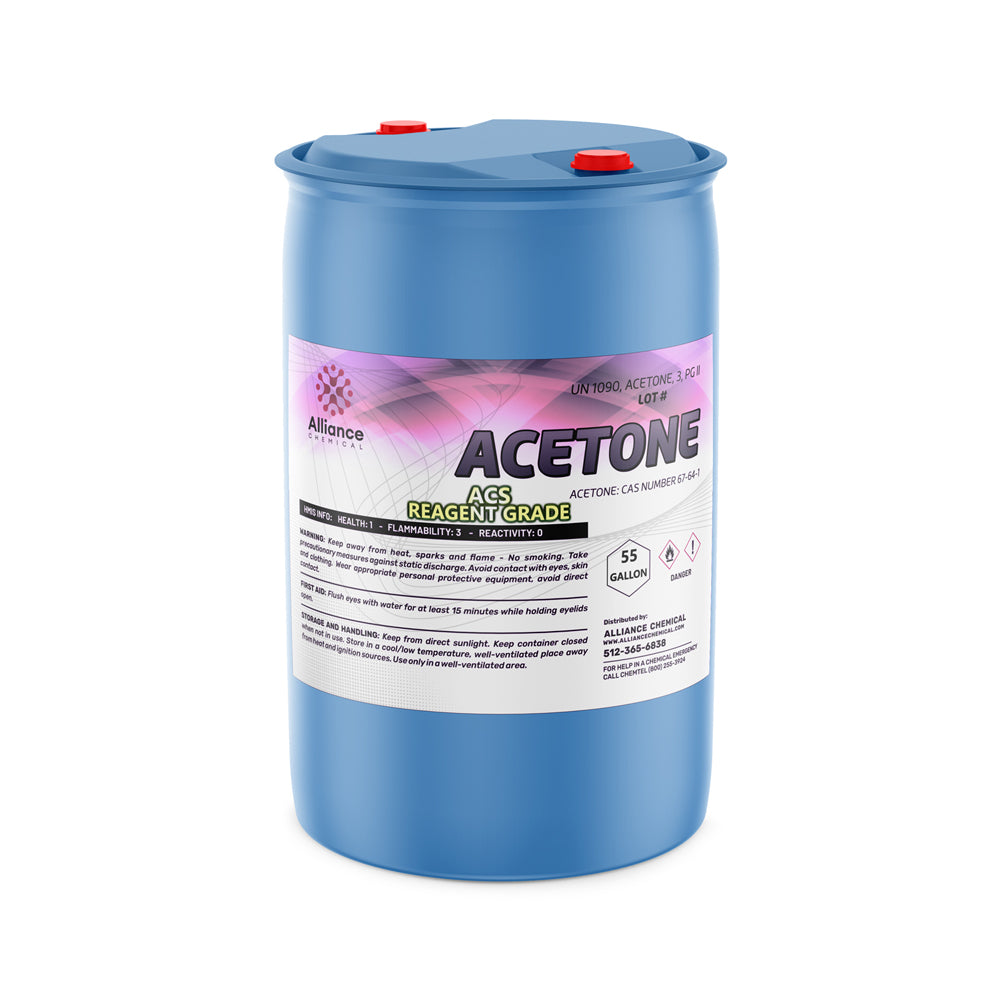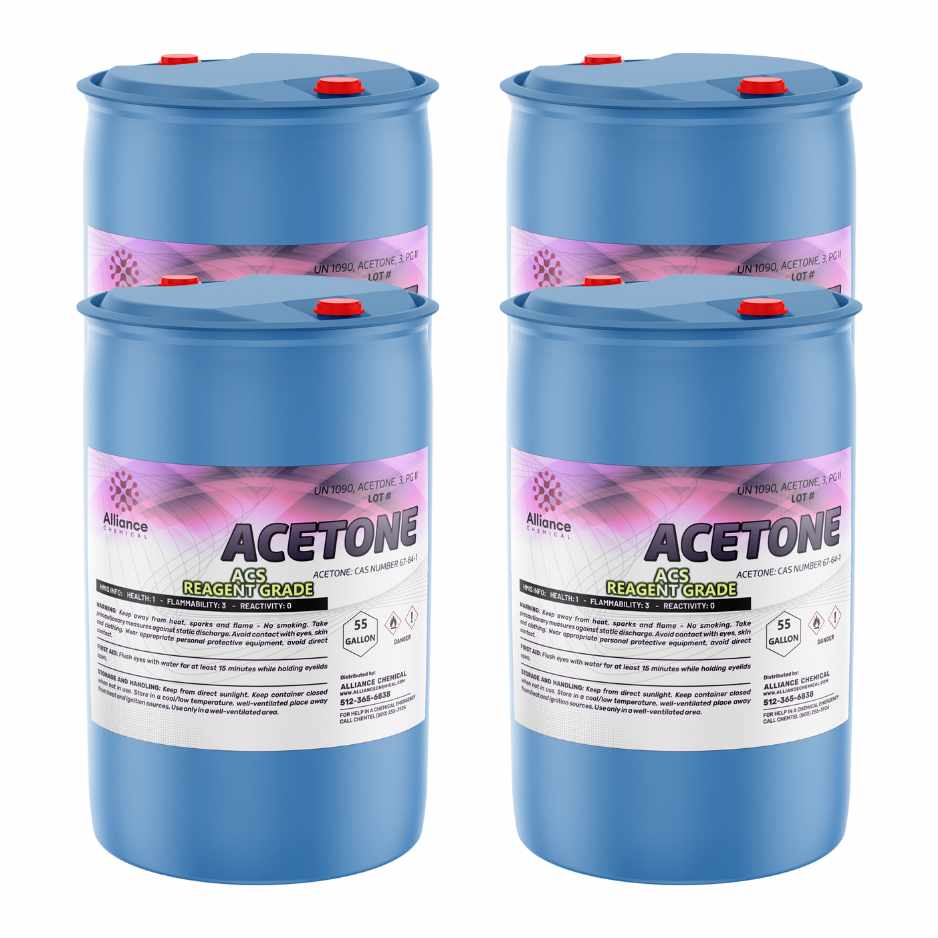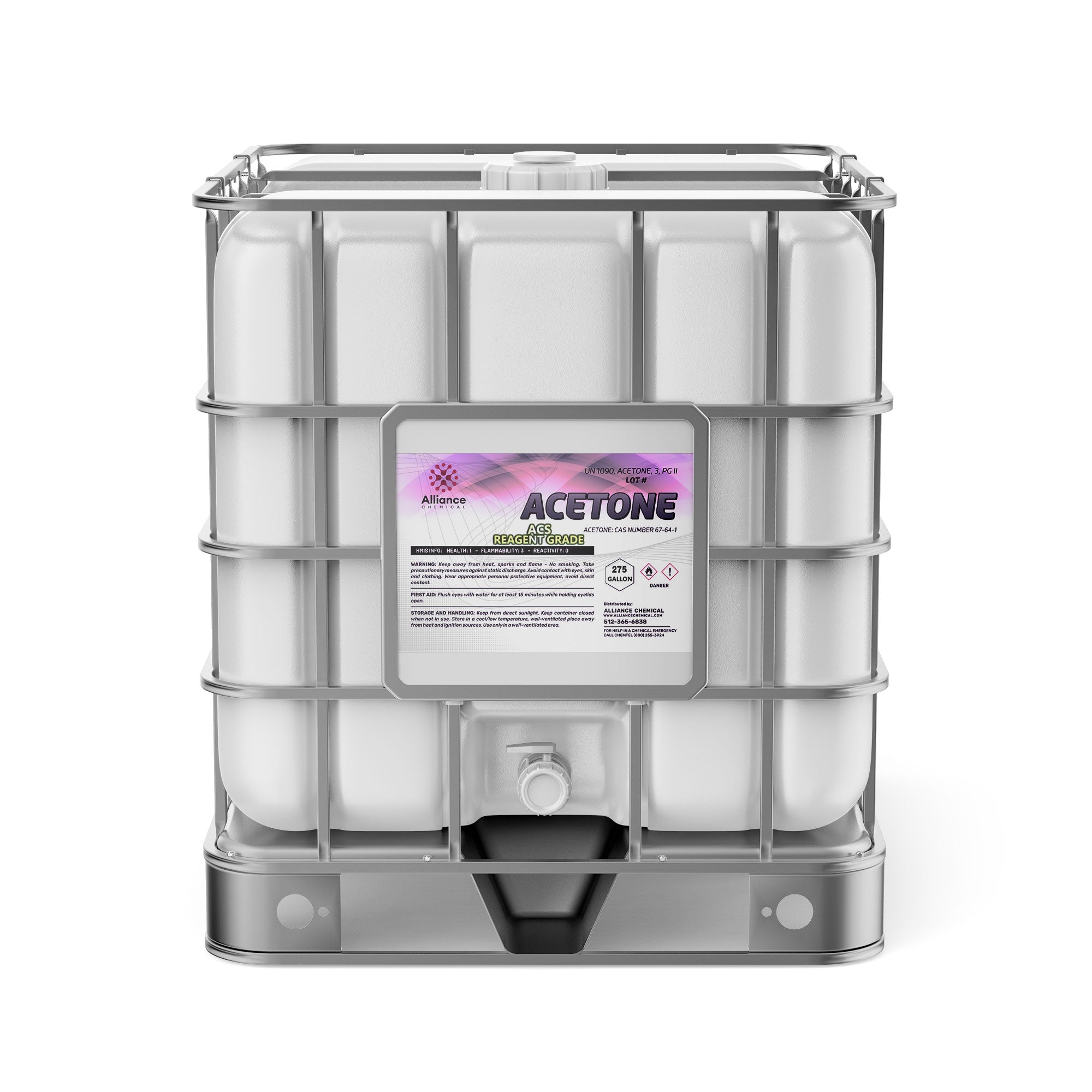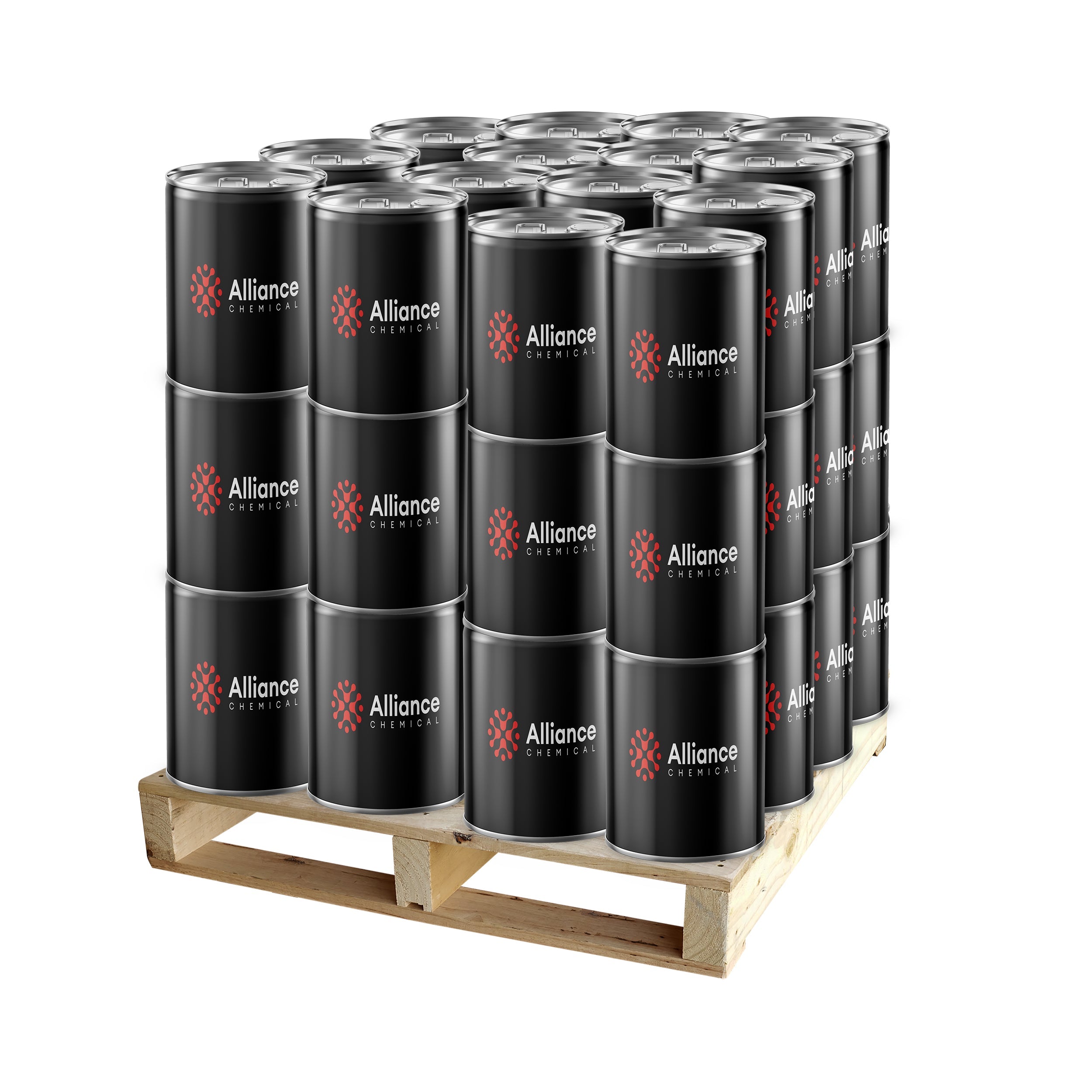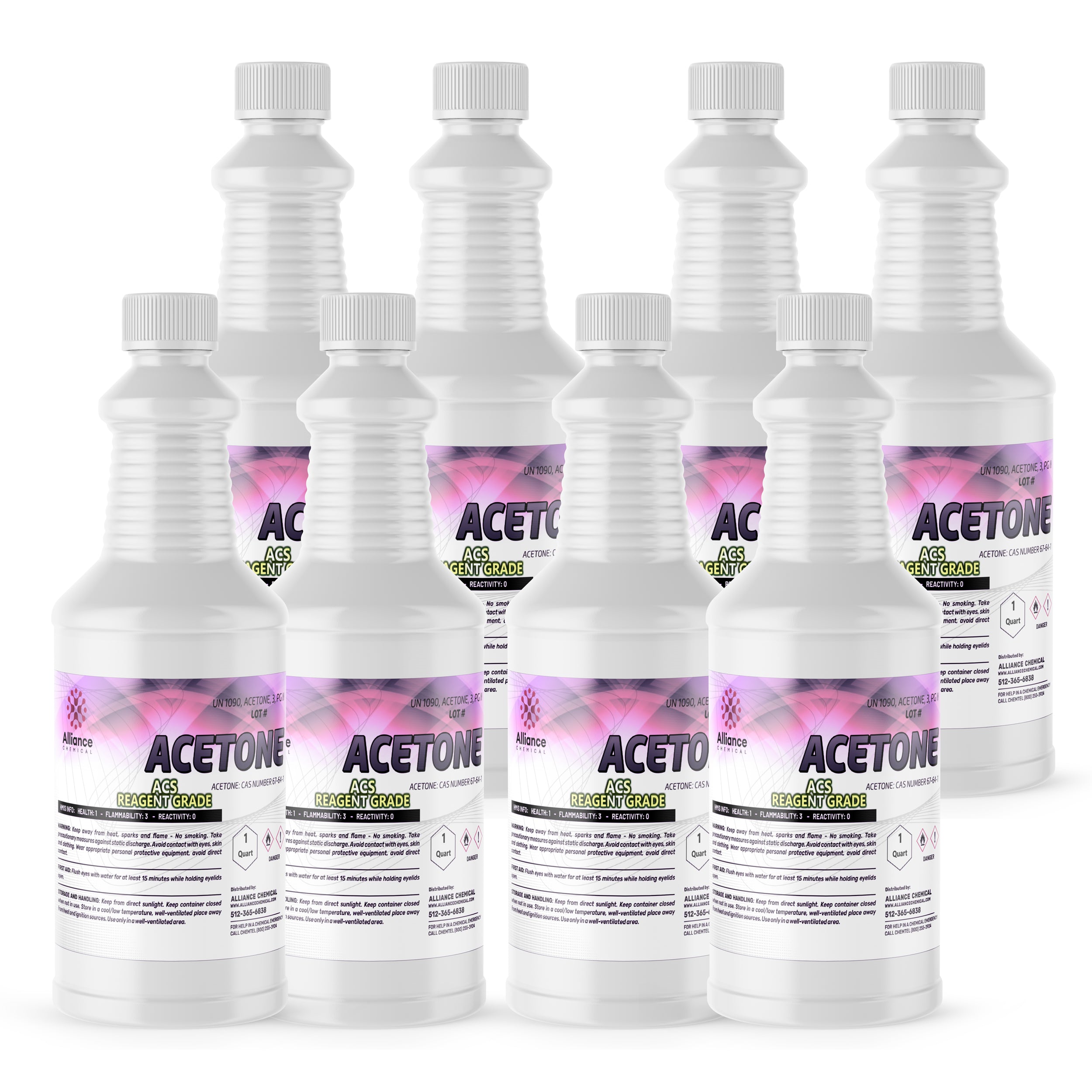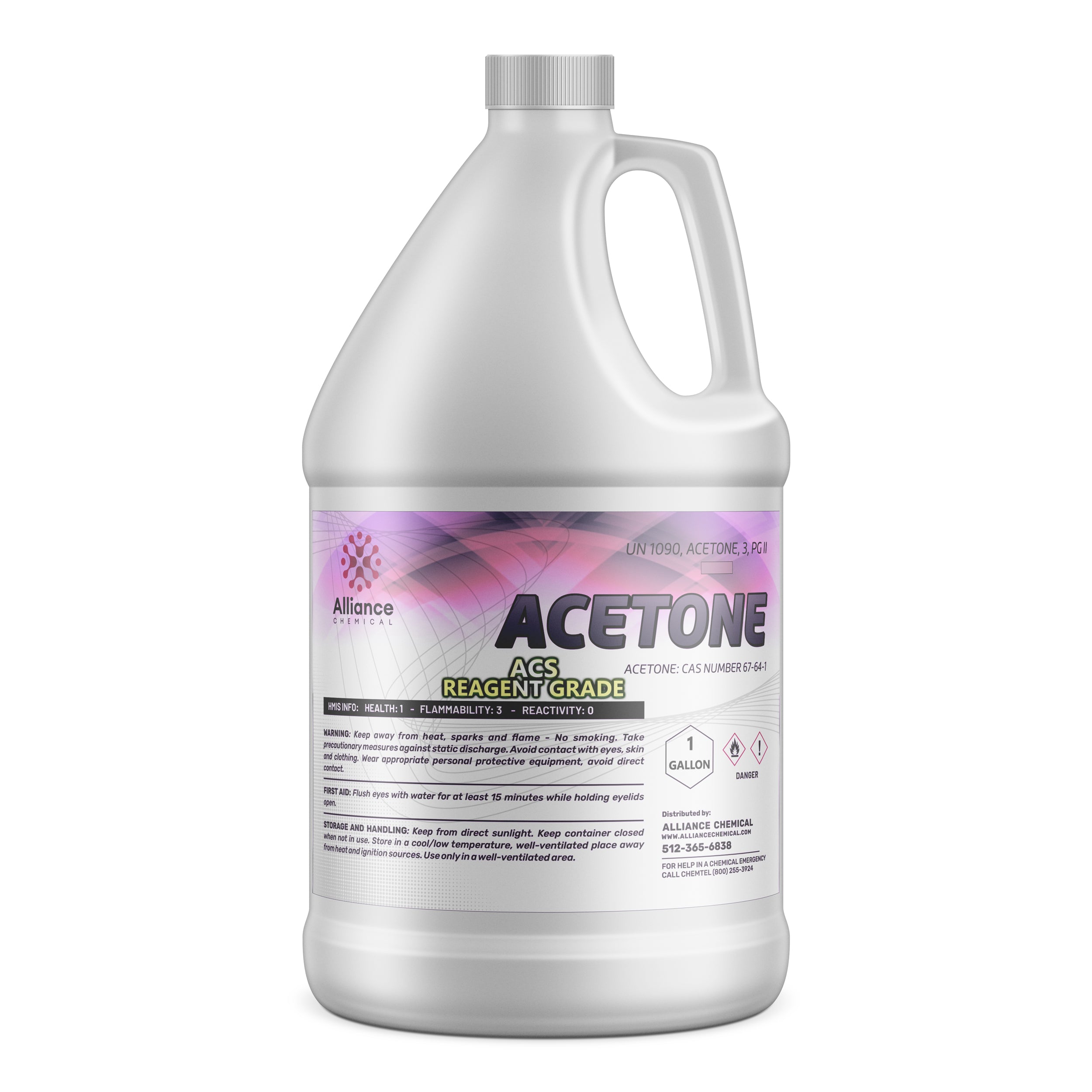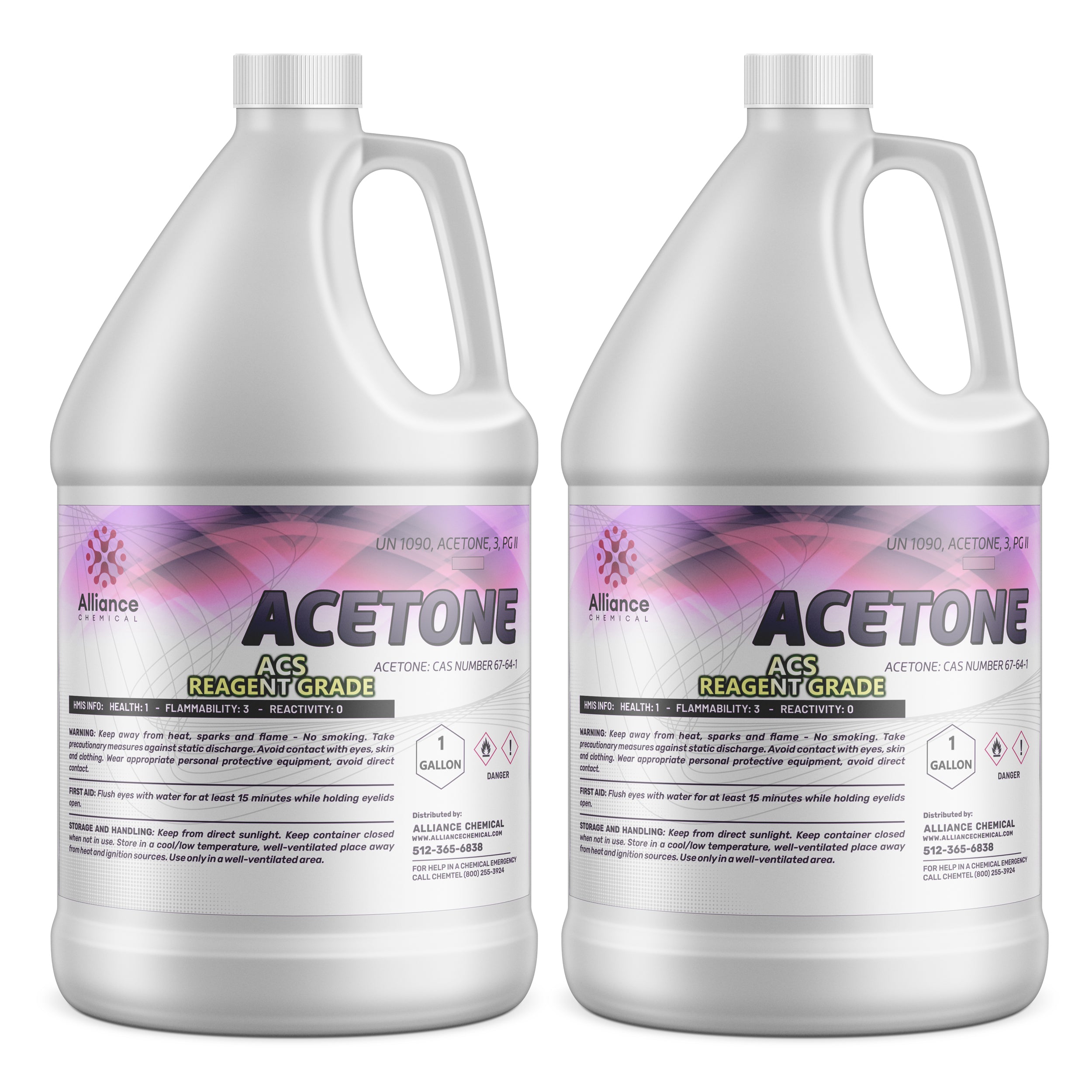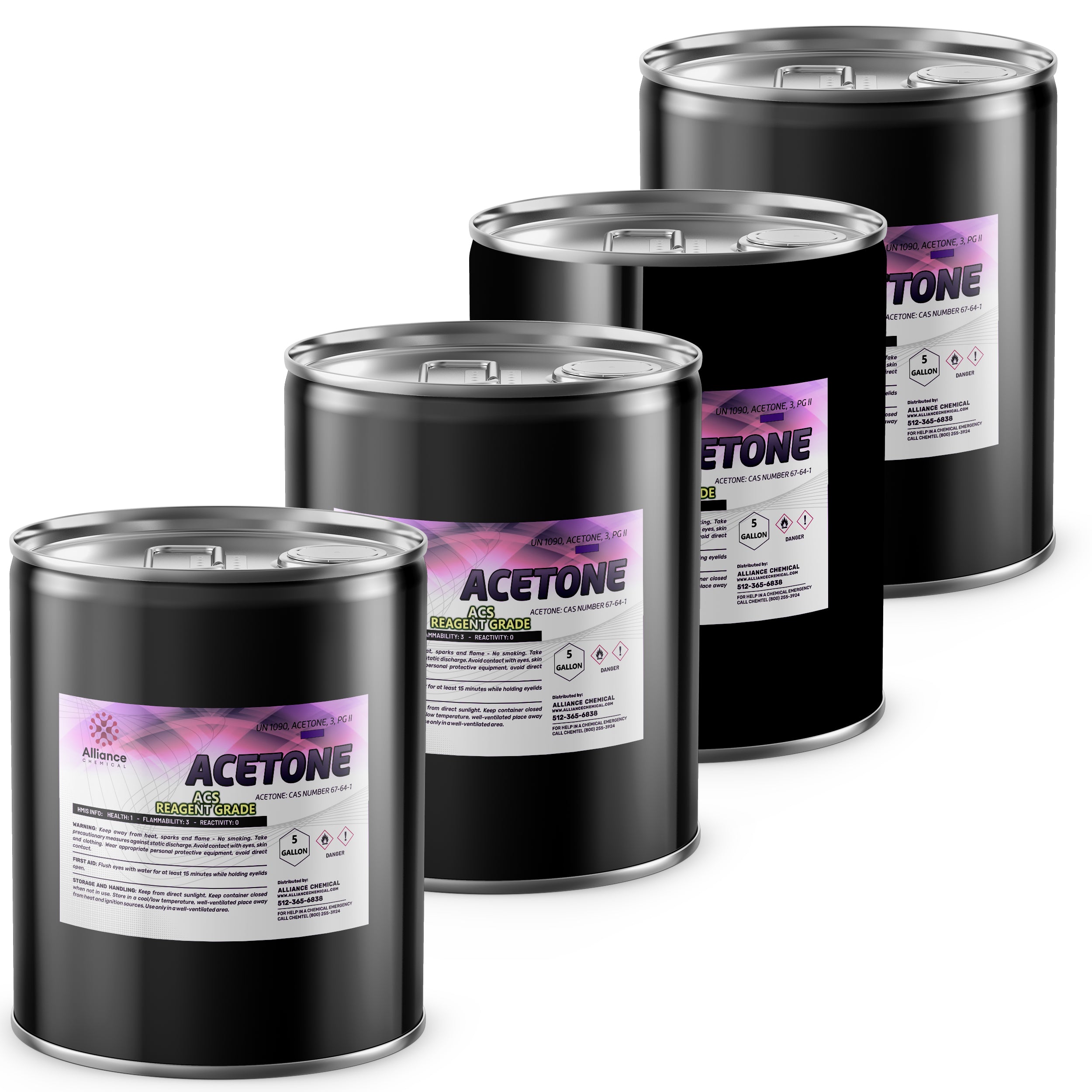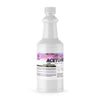Ask a question
Product Overview
Acetone ACS Grade (C₃H₆O), also known as 2-Propanone or Dimethyl ketone, is a clear, colorless, highly volatile organic solvent with a distinctive sweet odor. This ACS-grade solvent is formulated to meet stringent analytical standards, delivering a high assay purity (assay wt pct 99.0–100.5%, typically 99.7%) suitable for trace-sensitive applications. Its low residual and ultra-high purity profile are reinforced by controlled color (APHA 3 typical, max 5) and minimal inorganic contaminants, ensuring reliable performance in chromatographic and spectroscopic workflows. With a boiling point range of 56–57°C and a refractive index of 1.359 (20°C), acetone provides predictable volatility and excellent solvency across a broad range of organic and inorganic solutes. The product is supplied as a miscible, low-viscosity solvent with density 0.784 g/mL at 25°C, enabling precise dilution and consistent extraction behavior in analytical processes. This combination of purity, volatility, and compatibility underpins its role as a versatile solvent in pharmaceutical, chemical, and materials laboratories, as well as in industrial cleaning and coating formulation environments.
Its ACS-compliant status and USP-NF monograph alignment reflect rigorous quality control and adherence to established chemical standards, making it a trusted choice for research and manufacturing operations that demand traceable, reproducible results. The solvent's low aldehyde content (typical 2 ppm, max 10 ppm) and controlled metal levels further minimize potential interference in sensitive analyses, reinforcing confidence in analytical baselines and method robustness. Storage and handling guidelines emphasize maintaining an inert atmosphere to reduce moisture uptake and preserve solvent integrity, aligning with best practices for high-purity ketone solvents in controlled facilities.
Key Properties
- Appearance: Clear, colorless liquid
- Chemical Formula: C₃H₆O
- Molecular Weight: 58.08 g/mol
- Boiling Point: 56–57°C
- Specific Gravity (20°C): 0.785
- Density (25°C): 0.784 g/mL
- Refractive Index (20°C): 1.359
- Vapor Pressure (20°C): 180 mmHg
- Flash Point: 11°C
- Solubility: Miscible with water, ethanol, and ether
- Odor: Sweet, characteristic odor
- Assay (GC-FID): 99.0–100.5% (typical 99.7%)
- Color (APHA/Hazen): Typical 3 (max 5)
- Residue on Evaporation: Max 0.001% (typical 0.0005%)
- Chloride (Cl⁻): Max 0.5 ppm (typical 0.2 ppm)
- Nitrate (NO₃⁻): Max 1 ppm (typical 0.5 ppm)
- Ammonium (NH₄⁺): Max 0.5 ppm (typical 0.2 ppm)
- Sulfate (SO₄²⁻): Max 1 ppm (typical 0.5 ppm)
- Phosphate (PO₄³⁻): Max 0.5 ppm (typical 0.2 ppm)
- Arsenic (As): Max 0.2 ppm (typical 0.05 ppm)
- Heavy Metals (Pb): Max 0.5 ppm (typical 0.1 ppm)
- Iron (Fe): Max 0.5 ppm (typical 0.1 ppm)
- Copper (Cu): Max 0.5 ppm (typical 0.05 ppm)
- Manganese (Mn): Max 0.5 ppm (typical 0.05 ppm)
- Nickel (Ni): Max 0.5 ppm (typical 0.05 ppm)
- Lead (Pb): Max 0.5 ppm (typical 0.05 ppm)
- Zinc (Zn): Max 0.5 ppm (typical 0.05 ppm)
- Aluminum (Al): Max 2 ppm (typical 0.2 ppm)
- Chromium (Cr): Max 0.5 ppm (typical 0.05 ppm)
- Cobalt (Co): Max 0.2 ppm (typical 0.02 ppm)
- Calcium (Ca): Max 5 ppm (typical 1 ppm)
- Magnesium (Mg): Max 5 ppm (typical 1 ppm)
- Sodium (Na): Max 1 ppm (typical 0.2 ppm)
- Potassium (K): Max 1 ppm (typical 0.2 ppm)
- Water Content: Max 0.05% (typical 0.02%)
- Acidity (Meq/g): Max 0.0003 (typical 0.0001)
- Aldehydes (as acetaldehyde etc.): Max 10 ppm (typical 2 ppm)
- Storage/Handling Compliance: ACS Reagent Grade; USP-NF Monograph compliant
Common Applications
- Application Category: HPLC Mobile Phase – Used as a mobile phase component in reversed-phase HPLC to improve separation of organic compounds with predictable volatility and low UV cutoff.
- Spectroscopy Solvent – Serves as a baseline solvent for UV-Vis spectroscopy due to low UV cutoff and high purity, minimizing background interference.
- Cleaning Agent – Effective degreasing solvent for metal parts and surfaces in manufacturing and equipment maintenance, compatible with common analytical residues.
- Extraction Medium – Employed in liquid-liquid extraction processes in pharmaceutical manufacturing for isolating intermediates with high solvency efficiency.
- Solvent for Paints and Coatings – Used in formulation of paints/coatings to adjust drying rates and film-forming properties without compromising clarity.
- Sample Preparation – Facilitates dissolving solids and preparing analytical samples prior to instrumental analysis, supporting uniform loading and consistency.
- Chromatography Solvent Blends – Included in solvent blends for preparative chromatography and sample cleanup steps requiring low residue.
Safety Precautions
Handle Acetone ACS Grade in a well-ventilated area, using appropriate PPE (chemical-resistant gloves, safety goggles, and a lab coat). Store in cool, well-ventilated areas away from heat, ignition sources, and incompatibles; use HDPE or glass containers to reduce container interactions. Ensure containers are tightly closed when not in use and protect from moisture ingress under inert atmosphere as recommended by the TDS. Always follow institutional SOPs and the SDS guidance (DANGER – Flam. Liq. 2, Eye Irrit. 2, STOT SE 3) during handling and transport.
Secondary safety considerations include monitoring for potential exposure via inhalation or dermal contact; use local exhaust ventilation and closed systems for operations with large volumes or concentrated solutions. Be prepared for spills with appropriate absorbents and fire suppression methods suited for flammable liquids, and maintain ignition source controls per OSHA and NFPA guidelines. In case of contact with eyes or skin, follow the SDS first-aid procedures and seek medical attention if irritation persists.
Benefits
✔ High Purity and Compliance – ACS Reagent Grade with USP-NF alignment ensures consistent analytical performance and traceable quality across batches.
✔ Excellent Solvency and Volatility – Rapid evaporation and broad solubility make it a versatile solvent for analytical methods and coatings formulations.
| Property | Value |
|---|---|
| Molecular Weight | 58.08 g/mol |
| Formula | CH3COCH3 |
| Grade | ACS |
| Flash Point | -17 |
| Form | Liquid |
| Solubility | Soluble in water, alcohols, ether, and many other organic solvents |
| Appearance | Clear, colorless liquid |
| Melting Point | -94 °C |
| Boiling Point | 56 °C |
| Specific Gravity | 0.791 |
| Industry | Industrial, Healthcare, Other |
Compare Products
| Price |
|---|
| SKU |
| Rating |
| Discount |
| Vendor |
| Tags |
| Weight |
| Stock |
| Short Description |

